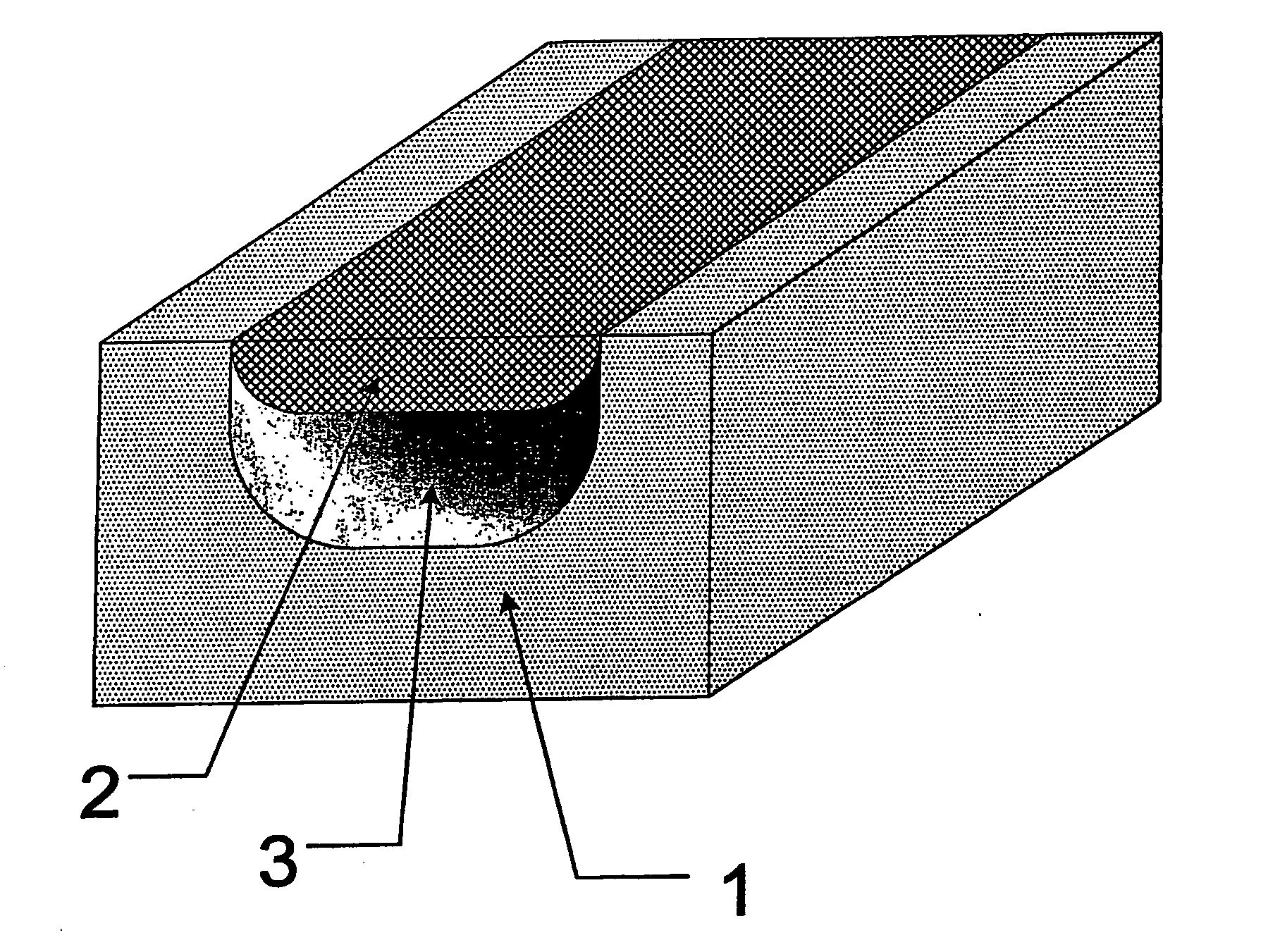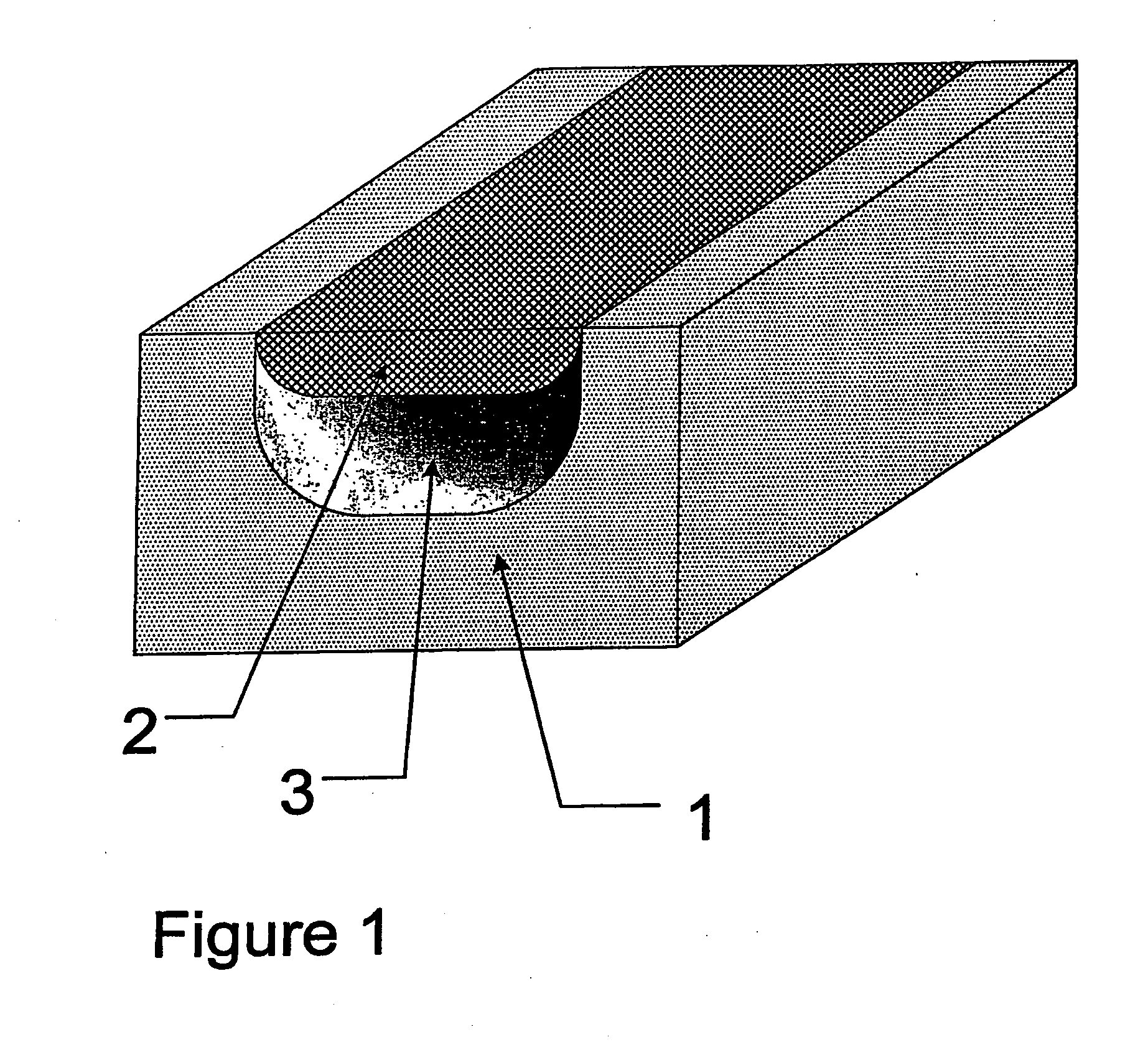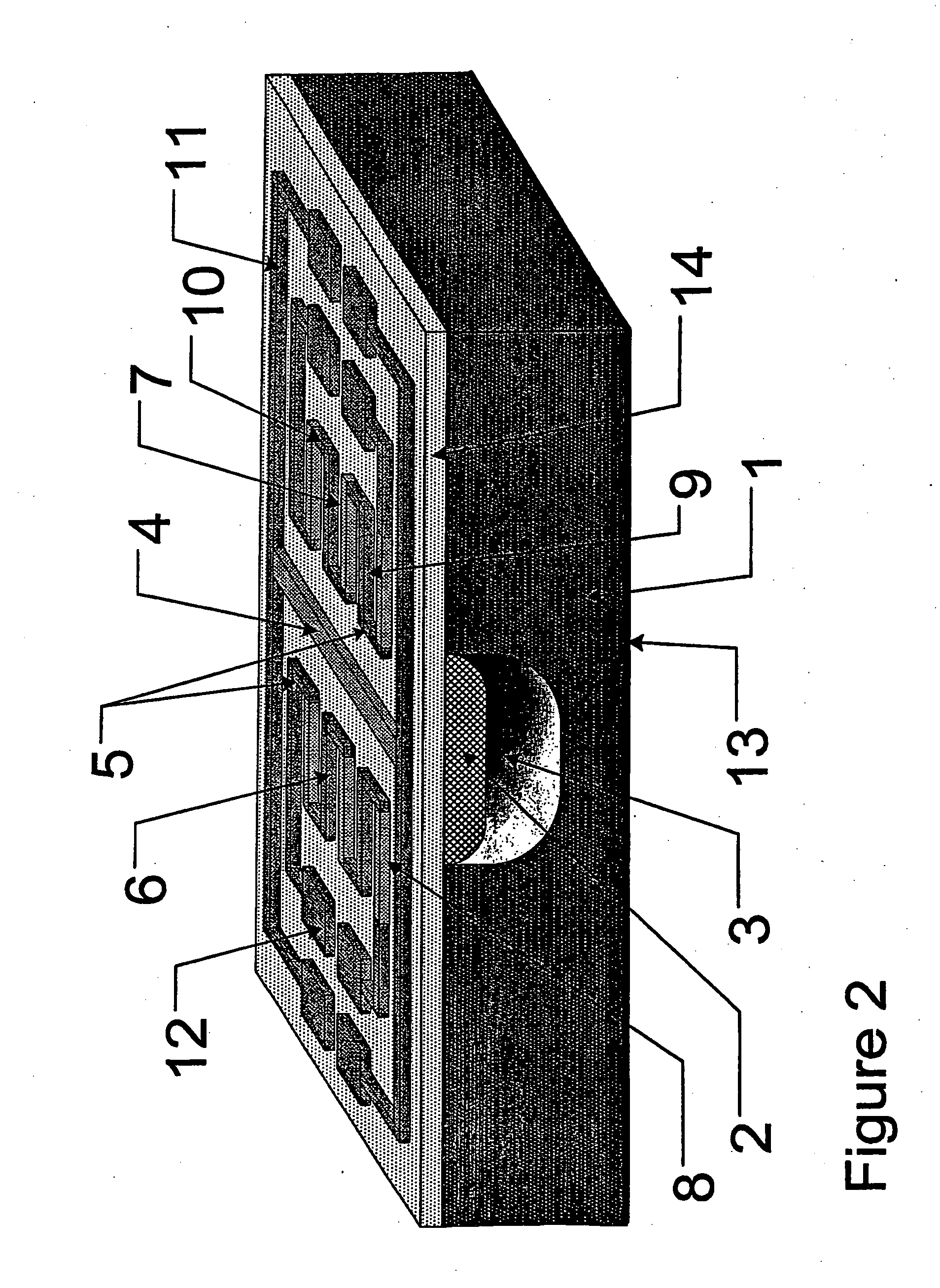"Low power silicon thermal sensors and microfluidic devices based on the use of porous sealed air cavity technology or microchannel technology"
- Summary
- Abstract
- Description
- Claims
- Application Information
AI Technical Summary
Benefits of technology
Problems solved by technology
Method used
Image
Examples
Embodiment Construction
[0018]FIG. 1 is a schematic representation of a silicon substrate (1) with a porous silicon layer (2) on top of a cavity (3). The whole structure is used for local thermal isolation on bulk silicon.
[0019]FIG. 2 is a schematic representation of a silicon thermal gas flow sensor. The base material is p-type silicon (1) in which a porous silicon membrane (2) with a cavity (3) underneath is formed.
[0020] On top of the porous silicon cavity area a polysilicon resistor (4) is formed and two series of thermocouples are integrated on each side of this resistor (6, 7). The hot contacts (5) of these thermopiles lie on porous silicon and the cold contacts (10) on bulk crystalline silicon. There are also aluminum pads (12) used as electrical contacts.
[0021]FIG. 3 shows the temperature on heater for thermal isolation by porous silicon of variable thickness over a cavity for a power of 8.57×106 W / m2 applied on the heater.
[0022]FIG. 4 shows the temperature on heater for thermal isolation by a ...
PUM
| Property | Measurement | Unit |
|---|---|---|
| Temperature | aaaaa | aaaaa |
| Flow rate | aaaaa | aaaaa |
| Current | aaaaa | aaaaa |
Abstract
Description
Claims
Application Information
 Login to View More
Login to View More - R&D
- Intellectual Property
- Life Sciences
- Materials
- Tech Scout
- Unparalleled Data Quality
- Higher Quality Content
- 60% Fewer Hallucinations
Browse by: Latest US Patents, China's latest patents, Technical Efficacy Thesaurus, Application Domain, Technology Topic, Popular Technical Reports.
© 2025 PatSnap. All rights reserved.Legal|Privacy policy|Modern Slavery Act Transparency Statement|Sitemap|About US| Contact US: help@patsnap.com



